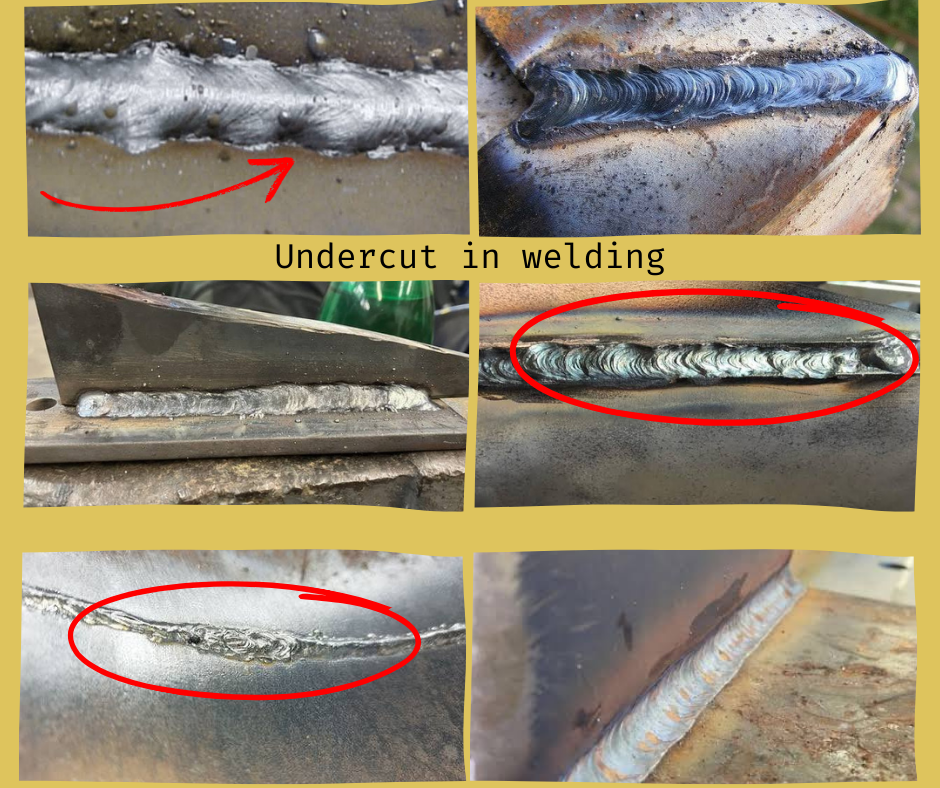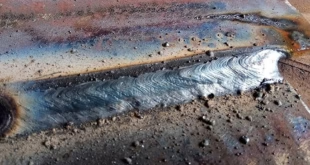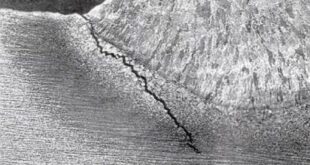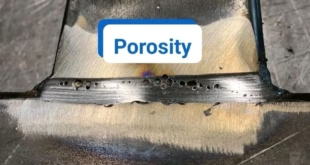Understanding Undercut in Welding: Causes, Effects, and Comprehensive Solutions
Table of Contents
ToggleIntroduction
Welding is an intricate craft where precision and quality are of utmost importance. One of the most common issues that welders encounter is a weld defect known as “undercut.” Undercut in welding is a groove or crater that forms at the toe of the weld bead, compromising the structural integrity and appearance of the welded joint. It’s a flaw that, if not identified and corrected, can lead to reduced strength, poor weld aesthetics, and even potential failure of the welded structure over time.
In this comprehensive guide, we will explore everything you need to know about undercut in welding, including its causes, types, impact on weld quality, and most importantly, detailed correction techniques to eliminate this defect. By understanding these aspects, you will be better equipped to create high-quality welds that meet industry standards.
What is Undercut in Welding?
Undercut is defined as a groove or depression that occurs at the weld toe, the point where the base metal meets the weld metal. It appears as a sharp indentation along the edges of the weld bead and is typically a result of excessive heat or improper technique. This defect can reduce the thickness of the base metal, creating a weak point that could become a crack initiation site, leading to the failure of the weld under stress.

Types of Undercut in Welding
There are primarily two types of undercuts:
- External Undercut: This type is visible on the outer surface of the weld and occurs when the arc moves too fast or the heat is too high, causing the edges of the weld to melt excessively without sufficient filler material to bridge the gap. External undercuts are relatively easy to detect visually.
- Internal Undercut: Also known as root undercut, this type occurs inside the weld joint, usually on the root side, making it harder to detect without specialized inspection techniques. Internal undercuts can significantly weaken the joint, especially in high-pressure applications such as pipelines.
Both types of undercut can compromise the strength of a welded joint, and eliminating them is crucial to ensure weld integrity.
Causes of Undercut in Welding
Identifying the root causes of undercut is the first step in preventing it. Various factors can lead to undercut in welding, including:
- Incorrect Welding Parameters
- High Welding Speed: Excessive travel speed of the welding torch can cause the arc to outrun the molten weld puddle, resulting in insufficient filler material to cover the melted base metal edges.
- High Current or Voltage: When the welding current or voltage is set too high, it increases the heat input, leading to over-penetration of the base metal and forming undercuts.
- Improper Torch Angle or Electrode Manipulation
- If the welding torch or electrode is not positioned correctly, it can cause uneven melting of the base metal. An improper torch angle can concentrate heat too much on one side, creating undercuts along the edge.
- Inadequate Filler Material
- Insufficient filler material deposition can leave gaps along the edges of the weld bead, causing undercuts. This often happens when the welder uses a small-diameter electrode or has improper feed speed.
- Incorrect Shielding Gas Composition
- Using an inappropriate shielding gas mixture can affect the stability of the arc, leading to inconsistent weld beads and undercuts.
- Contaminated Base Metal or Filler Material
- The presence of contaminants such as rust, oil, or moisture on the base metal or filler material can cause improper fusion and leave grooves along the weld edges.
Impact of Undercut on Weld Quality
Undercut is not just a visual defect; it can have serious implications on the performance and safety of the welded structure:
- Reduced Fatigue Strength: The presence of an undercut creates a notch effect, which acts as a stress concentrator. This significantly reduces the fatigue strength of the weld, making it susceptible to cracking under cyclic loading.
- Decreased Corrosion Resistance: Undercuts create crevices that are difficult to seal or paint properly, making them prone to corrosion. Over time, this can lead to the formation of rust, further weakening the joint.
- Failure Under Load: In structural applications, even a small undercut can serve as the starting point for crack propagation, leading to catastrophic failure of the component.
- Rejection of Welds: Undercut is one of the most common reasons for rejecting welds in inspection. According to welding standards like AWS D1.1 and ISO 5817, undercut depth should not exceed a specific value, typically 0.5 mm for steel. Exceeding this limit requires costly repairs and rework.
Correction Techniques for Undercut
When dealing with undercut in welding, it’s essential to adopt the right correction techniques to restore the integrity of the joint. Here’s a step-by-step approach to correcting undercut in different scenarios:
- Adjust Welding Parameters
- Lower the Welding Speed: Slow down the travel speed to ensure that the arc has enough time to fill the groove with filler material.
- Reduce Heat Input: Lower the current or voltage settings to avoid excessive melting of the base metal.
- Modify Torch Angle
- Ensure that the torch or electrode is at the correct angle. For most welding processes, an angle of 15-20 degrees from vertical is ideal. This helps distribute heat evenly and prevents undercut.
- Use Proper Filler Material
- Choose an appropriate filler material that matches the base metal composition and has the right diameter for the application. Increase the filler deposition rate if necessary.
- Improve Electrode Manipulation
- Use weaving or oscillation techniques to ensure even distribution of filler material along the edges of the weld. This is particularly useful in horizontal or overhead welding positions.
- Optimize Shielding Gas Composition
- Use the correct shielding gas mixture to stabilize the arc and prevent inconsistencies. For example, a mix of Argon and CO₂ in the right ratio can improve arc stability and prevent undercut.
- Clean the Base Metal Thoroughly
- Before welding, ensure that the base metal is free from rust, oil, moisture, or other contaminants. Use wire brushes or grinding tools to prepare the surface properly.
- Perform Multi-Pass Welding
- If the undercut is deep, consider performing multiple welding passes. The initial pass should fill the groove, and subsequent passes should reinforce the joint without creating additional undercuts.
- Rewelding the Undercut Area
- For severe undercuts, grind down the affected area slightly and perform rewelding using a lower heat input to avoid repeating the defect.
Techniques to Prevent Undercut
Preventing undercut is more efficient than correcting it after it has occurred. The following techniques can help welders avoid this issue altogether:
- Use Proper Welding Technique
- Always maintain a steady hand and consistent motion when moving the torch or electrode. Avoid sudden changes in speed or angle, as this can lead to uneven bead formation and undercuts.
- Select the Right Electrode Size
- Choose an electrode that matches the thickness of the base metal. Using too thin an electrode can lead to insufficient filler deposition, while a thick one may cause excessive melting.
- Use Stringer Beads Instead of Weaving
- In certain situations, using stringer beads (straight passes without side-to-side movement) instead of weaving can help control the heat input and prevent undercuts.
- Avoid Overlapping
- When performing multiple passes, ensure that each pass overlaps the previous one slightly to prevent leaving undercut at the weld toes.
- Control Interpass Temperature
- High interpass temperatures can exacerbate undercut formation. Allow the joint to cool between passes if necessary to maintain a controlled heat input.
- Inspect the Weld After Each Pass
- Regularly inspect the weld after each pass to detect and correct undercuts immediately. This prevents them from becoming more severe in subsequent passes.
Special Considerations for Different Welding Positions
Welding in different positions, such as flat, vertical, horizontal, or overhead, can impact the likelihood of undercut. Here’s how to minimize undercuts in each position:
- Flat Position
- Maintain a slight push angle and a slower travel speed to avoid melting the edges excessively. Use stringer beads to control the bead profile.
- Vertical Position
- For uphill welding, use a slight weaving motion to control heat input. Avoid excessive weaving, as it can cause undercuts along the sides.
- Horizontal Position
- Use a lower heat input to prevent sagging of the molten pool. Apply stringer beads with a slight torch angle adjustment to minimize undercut formation.
- Overhead Position
- This position is prone to gravity-induced undercuts. Use lower current settings, faster travel speed, and a small-diameter electrode to prevent molten metal from dripping and forming undercuts.
Inspection and Testing for Undercut in Welds
Detecting undercut is critical to ensuring the weld quality. Various inspection methods can be used:
- Visual Inspection
- Visual inspection is the first step in identifying undercuts. Trained inspectors look for grooves or sharp indentations along the weld toe.
- Dye Penetrant Testing (DPT)
- DPT can reveal surface-breaking defects, including undercuts. The dye seeps into the undercut and becomes visible under ultraviolet light.
- Magnetic Particle Inspection (MPI)
- This technique is useful for ferromagnetic materials. Magnetic particles are attracted to the groove, making the undercut visible.
- Ultrasonic Testing (UT)
- For internal undercuts, UT is highly effective. High-frequency sound waves are used to detect discontinuities inside the weld joint.
Conclusion
Undercut is a common but preventable welding defect that can compromise the strength and safety of a welded structure. By understanding its causes, effects, and correction techniques, welders can improve their skills and produce high-quality welds. Regular inspection, proper technique, and adherence to recommended welding parameters are essential to minimizing and eliminating undercuts. Implementing the preventive measures outlined in this article will not only save time and resources but also ensure that your welds meet the highest standards of quality and safety.
 Welding of Welders All about Welding and Welders
Welding of Welders All about Welding and Welders



